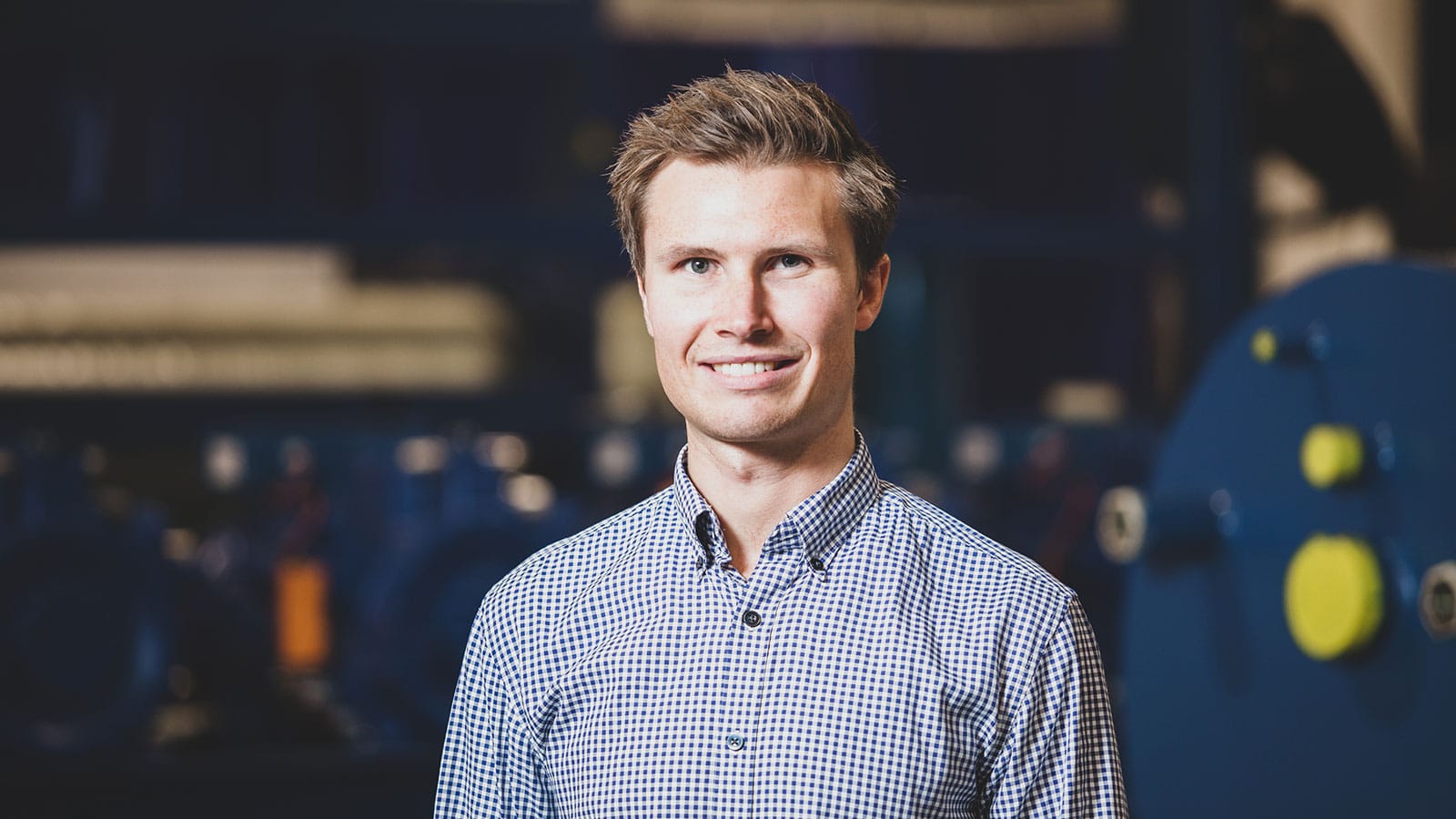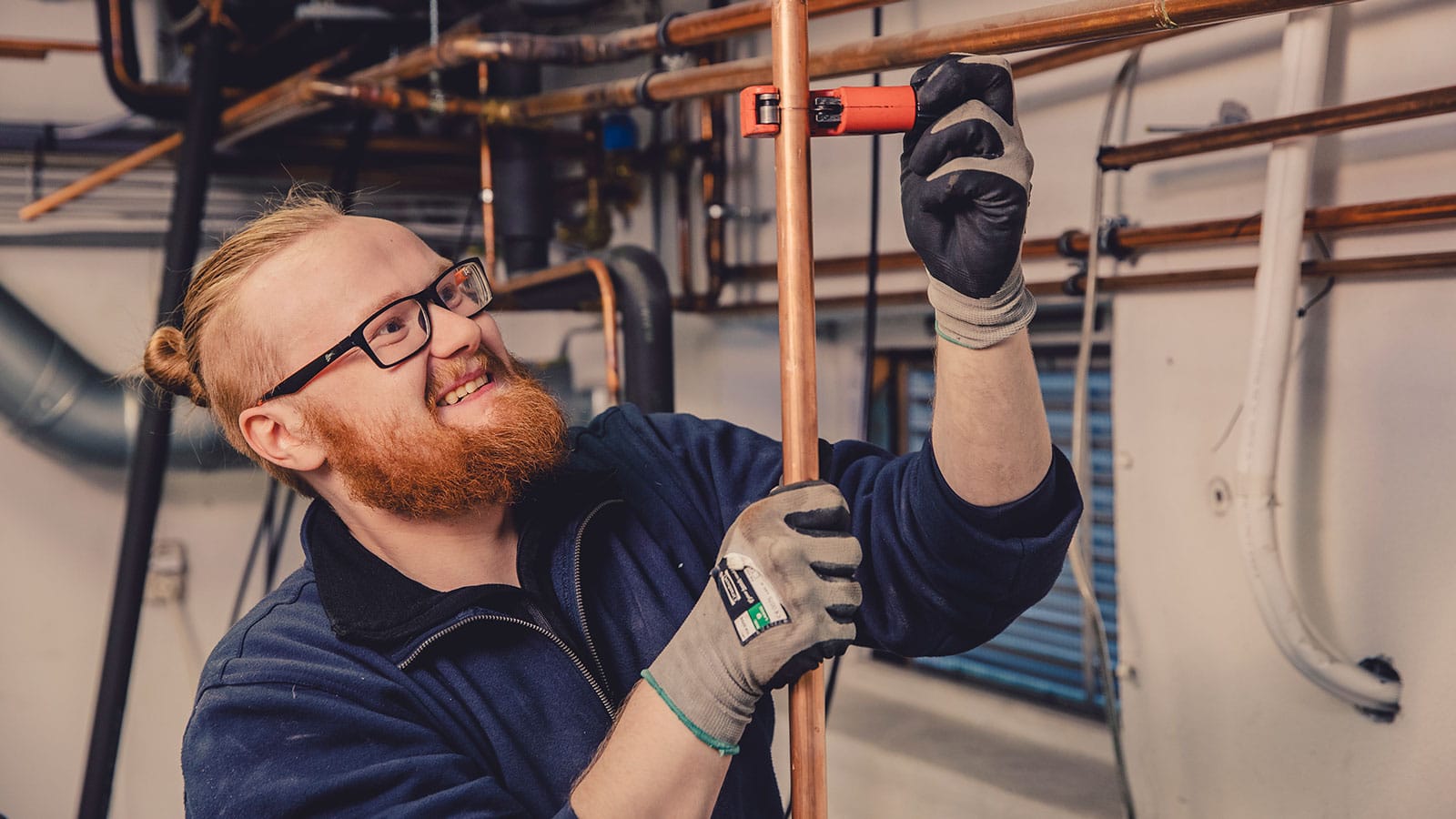PTG’s renewal of climate facilities at the University Hospital of North Norway’s kitchens and X‑ray department provides a significant reduction in the climate footprint. Photo: Frode Abrahamsen.
Climate expertise for reducing energy consumption and greenhouse gas (GHG) emissions is being contributed by PTG for an expansion in X‑ray and catering capacity at the University Hospital of North Norway (UNN).
With its head office in the north Norwegian city of Tromsø, PTG – Perfect Temperature Group – comprises a nationwide and increasingly international team of experts in refrigeration technology. It supports both commercial and public-sector enterprises in switching to more environment-friendly solutions.
Climate-friendly X‑ray expansion
Ranked among enterprises reliant on stable energy supplies, the UNN’s current acquisition of several additional X‑ray machines also calls for an expansion in the capacity of its cooling systems.
PTG’s Tromsø team is therefore in full swing with upgrading the hospital’s climate system to ensure that the new equipment functions as it should.
“Today’s solution utilises the synthetic refrigerant medium R‑407c, which is now being replaced with a natural medium,” explains Martin Corneliussen, PTG’s project manager for this assignment. “Unlike such synthetic media, natural refrigerants like CO2, ammonia and propane have low or no documented negative effects on the environment.”
Propane has been selected for the X‑ray department. This relatively new refrigerant is experiencing increased demand because of its environment-friendliness, broad applicability and good heating effect.
“While the previous installation had a global warming potential (GWP) of 1 774, the new propane facility is rated at three,” Corneliussen reports. “At the same time, this gas has an ozone depletion potential (ODP) of zero.
“In other words, the replacement project will have a significant environmental effect for the hospital.”

Martin Corneliussen is responsible for PTG’s deliveries of environment-friendly climate technology to the X‑ray department at the University Hospital of North Norway. Photo: David González.
3 600 meals per day
At the same time, the UNN is renovating the kitchen it uses to produce about 3 600 meals per day for patients. In addition to the cooking facilities, this entity embraces 14 refrigerated rooms and a freezer room.
When the renovated installations are ready in the summer of 2023, they will be far more environment-friendly and energy-efficient than before.
Stian Olsen, project manager for PTG’s delivery of refrigeration and freezer systems here, reports that reducing food deterioration is not the only consideration.
“We’re upgrading the UNN’s old ice-water plant and installing a CO2 freezer. These units will cool down the refrigerated and freezer rooms in a very energy-efficient and space-saving manner.”
“In addition, we’re capturing surplus heat for use elsewhere in the hospital. That ensures no energy is wasted, and we achieve much lower energy consumption than before”, Olsen explains
While the plants in the new kitchen facility will collectively deliver 77 kilowatt-hours for cooling, up to 120 kWh in surplus energy will be transferred as heat directly to the indoor climate system.
Green transition in practice
“The CO2 plant has a global warming potential (GWP) of one and a ozone depletion potential (ODP) of zero,” Olsen says. “By comparison, the system we’re replacing had a GWP of no less than 3 922.”
In other words, reduced heat loss, minimal space requirements, and natural and safe input factors with an eye to food production mean a significant reduction in the kitchen’s total environmental footprint – or the green transition in practice, as PTG puts it.
“We see that what we do has a concrete effect,” observes Olsen. “We were early off the mark in turning our attention to environment-friendly climate technology, and have therefore built up strong and broad expertise with natural refrigerants.
“That benefits both our customers and the environment. It’s gratifying to help make such a concrete difference to both the environment and hospital operation”, Olsen concludes.

“It’s gratifying to help make such a concrete difference to both the environment and hospital operation”, says Stian Olsen, project manager at PTG. Photo: Photographer Marius Fiskum.

